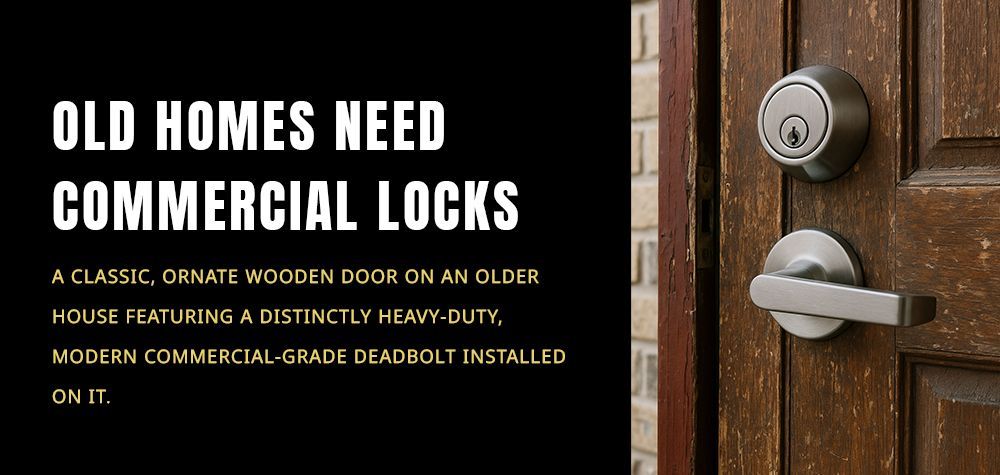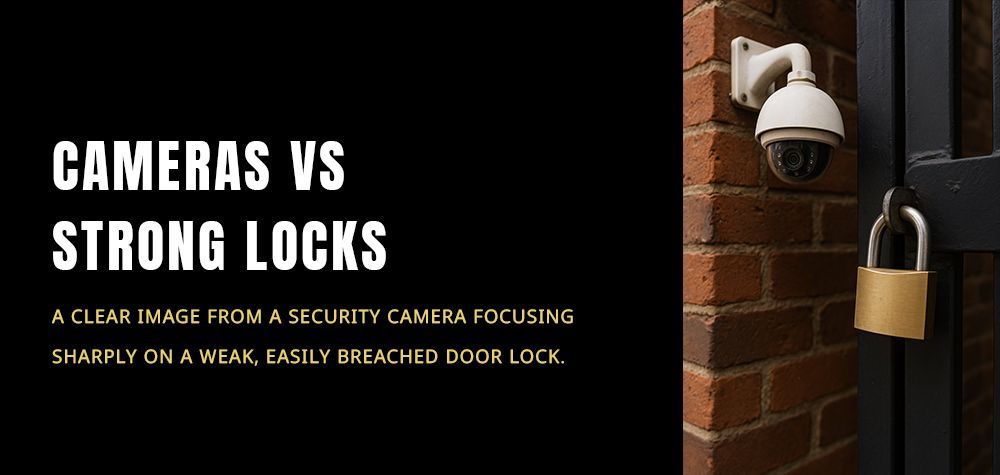How to Maintain Locks in Coastal (Salt-Air) Environments
Living near the coast offers many perks — fresh ocean air, beautiful views, and a peaceful lifestyle — but that same salty air can wreak havoc on your home’s metal fixtures, especially locks. The constant exposure to moisture and salt accelerates corrosion, leading to rust, stiffness, and mechanical failure. This is why maintaining your locks in a coastal environment requires extra attention and the right preventive care.
The psychology behind where burglars try locks first
Understanding the Effects of Salt Air on Locks
Salt air is highly corrosive because it contains salt particles that cling to metal surfaces and attract moisture. Over time, this combination leads to oxidation, which eats away at the metal and weakens its structure. Traditional locks made of untreated steel or iron are especially vulnerable, often showing signs of rust within months of installation. Even stainless steel, which resists corrosion, isn’t completely immune in such conditions.
The problem is not just aesthetic — corrosion can jam internal mechanisms, make keys hard to turn, and even cause lock failure. Once rust forms inside the cylinder or latch, it can quickly spread, requiring full replacement.
Choosing the Right Lock Materials
When living in a salt-air environment, choosing corrosion-resistant materials is the first line of defense. Brass and stainless steel are often the most durable options for coastal areas. Brass, in particular, forms a protective oxide layer that helps resist corrosion, while marine-grade stainless steel (316 stainless) offers excellent protection against salt exposure.
Powder-coated or anodized finishes also add a protective barrier against salt, helping locks withstand harsh weather. If possible, opt for marine-grade hardware, which is specifically designed for environments with high humidity and salt concentration.
Regular Cleaning and Maintenance
Regular cleaning is crucial to keeping your locks in top condition near the sea. Salt deposits can settle on the surface daily, so wiping locks with a damp cloth followed by a dry one helps prevent buildup. Avoid using plain water alone, as it can leave behind minerals that worsen corrosion.
Once or twice a month, use a mild detergent or a vinegar-water mix to gently clean your locks. Make sure to dry them thoroughly afterward, as leaving moisture on metal encourages rust.
If your locks are electronic, clean around the keypad or sensor gently with a microfiber cloth. Avoid getting moisture into the electronic parts — saltwater exposure can damage circuitry.
Lubricate Locks Regularly
Lubrication plays a vital role in coastal lock maintenance. Use a silicone-based or graphite lubricant instead of oil-based ones, as oil attracts dust and sand, leading to clogging. Apply the lubricant to the keyway, latch, and hinges to ensure smooth operation and protect the inner components from salt corrosion.
Do this every few months or more often if you live right by the ocean. Remember to insert and turn your key several times after lubricating to distribute the product evenly.
How to secure utility room doors and service entrances
Protective Covers and Lock Shields
If your locks are directly exposed to sea breezes or rain, installing lock covers or weather shields can provide extra protection. These small accessories prevent salt spray and sand from settling inside the keyhole.
In highly exposed areas, consider using keypad covers for smart locks or protective housing for padlocks and gate locks. Even a small barrier can significantly extend your lock’s lifespan in harsh conditions.
Schedule Routine Professional Inspections
Even with regular maintenance, locks in coastal environments need occasional professional attention. A locksmith can perform a deep inspection, remove internal corrosion, and re-lubricate components that are difficult to access.
If you notice stiffness, grinding noises, or difficulty turning the key, call a locksmith early before the mechanism seizes completely. Routine checks also help ensure that door alignment and seals are intact, preventing water from getting into the lock cavity.
Replace Locks Before They Fail
Coastal air shortens the lifespan of most locks, so be proactive about replacing aging ones. Once corrosion sets in, repair may not be possible. Investing in high-quality marine-grade locks may cost more initially but saves you from frequent replacements and security risks.
When upgrading, look for locks tested for salt spray resistance or products specifically labeled for coastal or marine environments.
Smart Locks and Coastal Conditions
If you’re using a smart lock, be cautious about choosing one with weather-resistant casing and IP-rated waterproof protection. Salt can damage the internal electronics or cause battery corrosion if the device isn’t sealed properly.
Consider using models with removable waterproof covers or place them in semi-sheltered spots like porches to reduce direct exposure to sea air.
Final Thoughts
Maintaining locks in a coastal environment is not just about convenience — it’s about security and long-term protection. Salt air can silently corrode even the strongest locks if left unchecked, but with the right materials, cleaning routine, and professional care, you can extend their life significantly.
A well-maintained lock not only resists the elements but also ensures your doors remain secure, functional, and hassle-free for years — even by the sea.
Call Us Any Time!






